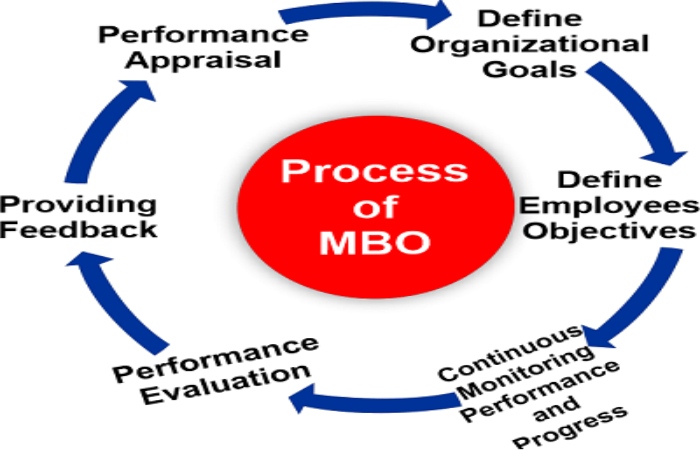Table of Contents
Introduction
Management by objectives is a planned management model that proposes to improve the performance of an organization by clearly defining objectives that both management and employees agree on. According to the theory, having a say in setting goals and action plans encourages employee participation and commitment and aligning goals throughout the organization.
Understanding Management by Objectives
Management by objectives, also identified as management by planning, creates a management information system (MIS) to compare actual performance and achievements with defined goals. Experts claim that the significant benefits of MBO are that it recovers employee motivation and commitment and allows better communication between management and employees.
However, one weakness of MBO cited is that it emphasizes setting goals to achieve objectives rather than working out a systematic strategy. Censors of MBO, such as W. Edwards Deming, argue that setting specific goals, such as production goals, forces workers to meet those goals by any means necessary, including shortcuts that result in poor quality.
How Does Management by Objective Work?
MBO is a full-scale organizational strategy. It involves people from top to bottom of the productive chain. At first, the managers identify the main goals of the company. Next, they set up strategies to communicate company goals to the staff.
The sole concept behind this management model is clarity. When employees have clarity about the goals, they are more efficient at meeting them. The plans are challenging but also realistic.
All objectives are quantified and monitored to ensure that the strategies are working. In the end, the employees receive feedback based on their performance. Over time, the organizations fine-tune these goals and increase overall productivity.
Steps in Management by Objectives Process

1. Define the objectives of the organization
Setting goals is not only crucial for the success of any business, but it also serves a variety of purposes. You need to include several different types of managers in the target configuration. Objectives set by supervisors are tentative, based on their interpretation and assessment of what the company can and should achieve in a given time.
2. Define employee goals
Once employees are made aware of the general goals, plans, and strategies to be followed, managers can begin working with subordinates to establish their personal goals. It will be a one-on-one discussion where the aides will inform the managers about their goals, what purposes they can achieve within a given time frame, and with what resources. They can then share tentative ideas about possible plans for the organization or department.
3. Continuous monitoring of performance and progress
Although management by objectives is vital to increase the effectiveness of managers, it is equally important to monitor the performance and improvement of each employee in the organization.
4. Performance Review
Within the MBO framework, performance appraisal is achieved through the managers’ participation.
5. Provide feedback
In management by objectives, the most crucial step is continuous feedback on results and goals, allowing employees to follow up and correct their actions. Ongoing feedback is complemented by regular evaluation meetings where superiors and subordinates can discuss progress toward goals, thereby generating further feedback.
6. Performance Review
Performance appraisals are a routine evaluation of employee success in MBO organizations.
Advantages and Disadvantages

Like any other organizational model, MBO has both advantages and drawbacks.
Advantages
- Overall, management by objectives increases the productivity of an organization over time because it continuously evolves the process.
- It increases the quality of teamwork and communication between the management team, as they need to constantly cooperate to ensure clarity in the strategies and provide feedback.
- Employees may achieve their goals more quickly because they will be coherent and achievable.
- It enhances the transparency of the organization and the efficiency of the management. Thus, it improves productivity by minimizing ambiguity.
Disadvantages
- It emphasizes the goals too much.
- Some relevant parts of a company are often ignored by MBO, such as company culture, work ethos, and interpersonal activities.
- MBO can cause burnout as it puts a heavy strain on employees to meet the goals set by management.
What is the purpose of Management by Objectives (DPO)?
(MBO) uses a set of quantifiable standards or objectives against which a company’s and its employees’ performance is measured. By comparing actual productivity against a given set of standards, managers can recognize problem areas and improve performance. Both management and workers know and approve to these standards and their objectives.
What is an example of MBO?
A company can set many goals with its employees. In the case of a call center, an MBO can increase customer satisfaction by 10 percent while reducing call times by up to a minute. The onus is now to find ways to achieve this goal. Once a decision is made, getting employees on board is vital. Monitoring their progress, delivering feedback, and rewarding good performers is critical.
Conclusion
MBO makes a lot of sense: Help employees get involved in setting company goals, and they’re more likely to share management’s plans, work harder, and deliver.
However, there is also a good reason why MBO is widely criticize. Like the most important things that look good on paper, they don’t always work in practice. The key is to be aware of your pitfalls, tailor the plan to your organization, and ensure everyone is on the same page and the goals are clear and reasonable before you begin.

